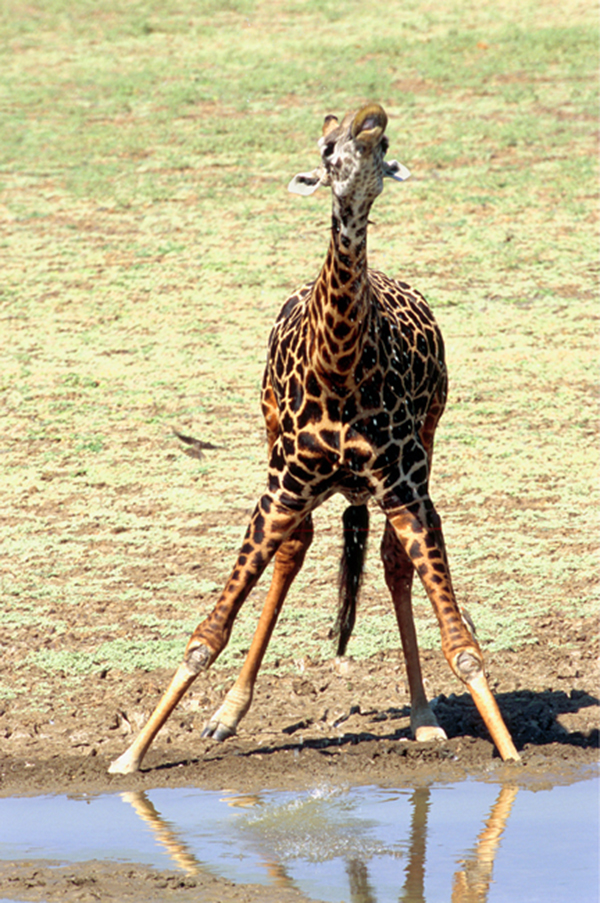 above: Larry's shot of a young woman in Namibia
above: Larry's shot of a young woman in Namibia
Ever have a talented member of your family you new nothing about?
Well, yesterday I discovered that my second cousin -who I thought was merely a brilliant plastics and polymers engineer, is actually a talented photographer to boot!
 Larry Broutman
Larry Broutman has a passion for travel, particularly to remote areas of the world. During the past 15 years he has traveled to all 7 continents and even included a trip to the North Pole aboard a Russian nuclear icebreaker. His interests have included visiting hill tribes in Asia, nomadic tribes in Africa, and touring in India and other Himalayan countries. A desire to document these travel experiences sparked his enthusiasm in photography. His interest in photographing other cultures eventually broadened to travel and outdoor photography, or as Larry describes it, "photographing images of the natural world."
 above: Cambodia
above: Cambodia
Larry has specialized in photographing people, wildlife and landscapes. He has studied and toured with some of the best-known documentary and nature photographers in the field. His images have been sold to corporations, private collectors and travel publications. He currently has an exhibit scheduled to open at the Illinois Institute of Technology in the fall of 2004 and has completed an installation of wildlife photography at the Childrens Memorial Hospital Outpatient Clinic.
 above: Sparring hippos
above: Sparring hippos
Larry's people photography captures the human side of foreign cultures and tribes. A Japanese sumo wrestler sweeps the floor with an antique broom. A stunning beauty from Namibia shows off a hairstyle caked with mud. A young monk from Bhutan in traditional dress stands in striking contrast to the blue wall of his monastery.
People:

above: Hamar girl, Ethiopia

above: Papua, New Guinea

above: Mursi Woman, Ethiopia

above: Mursi Woman, Ethiopia

above: Samburu Warrior, Kenya

above: Hamar man, Ethiopia

above: Karo Warrior, Ethiopia

above: Karo Elder, Ethiopia

above: Laos

above: Cambodia

above:Laos

above: Laos
His wildlife and landscapes also take us to breathtaking locales and capture moments of vivid intensity. A cheetah from South Africa gazes into a golden sunset. A lilac breasted roller reminds us of the impossible beauty that is commonplace in Botswana. A landscape in Anza Borrego, California captures the fuchsias, greens and violet hues of the desert.
Wildlife:

above: leopard cub, South Africa

above: Giraffe, Nambia

above: Mountain Gorilla, Uganda

above: Zebras, Nambia

above: Polar Bears, Norway

above: Wildebeest dive

above: Malachite Kingfisher

above: Baboon and infant
As if his beautiful photography weren't enough to impress you, he also invented a specific way to use the
Quick-set pan and tilt positioning tripod (the benefits of being an engineer and photographer):
QuickSet Goes to Africa
When Larry Broutman packed his bags heading for Tanzania’s Serengeti National Park this April, he surely brought his safari hat. But even more important was his trusty Quickset Pan and Tilt. Broutman, a professional photographer working on his second educational media project for the Lincoln Park Zoo’s Regenstein African Journey exhibit, spent much of April photographing the migration of wildebeests, zebras and gazelles. This migration is a constant, cyclical movement between Kenya and Tanzania. It follows the rain and birth cycles, carrying herds south from Kenya into the Serengeti in the springtime. When he arrived, Broutman was greeted by millions of wildebeests, among them the new calves, born just this February. It was a truly awesome sight to see.
While there were many anxious photographers roaming the African plains hoping for the perfect shot, none went about it quite like Broutman. Because of the mostly flat topography of the Serengeti, he thought it would be ideal to have the benefit of elevation in his work. He wanted a 40-foot telescoping mast attached to his truck, allowing for mobility and the unique aerial perspective he sought. He mounted a digital camera atop a pan and tilt, linked to the ground by a video feed that would be his eyes. From the shelter of his truck, Broutman was able to maneuver the camera through an incredible range of shot angles and to capture the still photographs onto his laptop. These photos can be seen as part of the zoo’s African Journey, delighting and educating visitors from all over the world.


Above left: the quick-set tripod in use by Larry, shown on the right
BIO
Larry began his professional career as a professor at the Illinois Institute of Technology in Chicago. He has his undergraduate and doctorate degrees from MIT in the field of Materials Science. Larry is known worldwide for his research and has published 160 research articles and several text books in the field of plastics and composite materials. In the mid 80's, Larry founded, L.J. Broutman Associates and co-founded Advanced Polymer Compounding. The former company became one of the largest and most prestigious plastics laboratories and consulting companies in the U.S., and the latter is among the foremost plastics compounding companies in the U.S.
Larry continues to travel and recently returned from trips to Cuba and Southern India. His plans include additional wildlife installations and further exhibits of his people photographs from around the world. His travel agenda for this year will include China, Africa and India.
-----------------------------------------------------------------------------------------
Some of Larry's photographs can be seen on
his website.
For further information, please call Lisa Ridolfi at 847-337-3987.
Exhibitions:
Eye on Africa
June 23-Sept 30, 2005
Hermann Hall
Illinois Institute of Technology [info]
Chicago, IL
East Africa-The Wildebeest Migration
Permanent Exhibit
Regenstein African Journey Building
Lincoln Park Zoo [info]
Chicago, IL.



















































